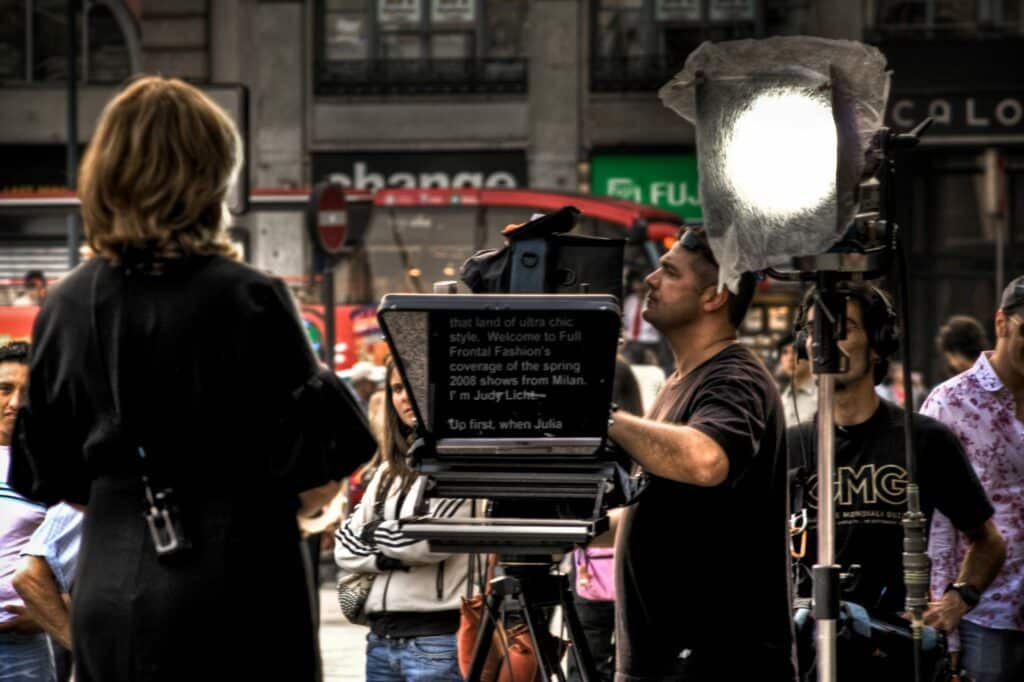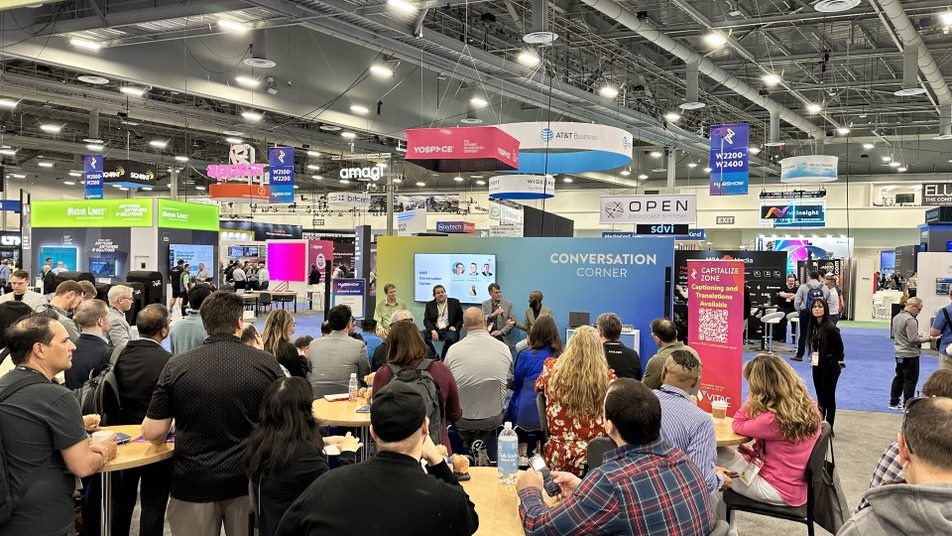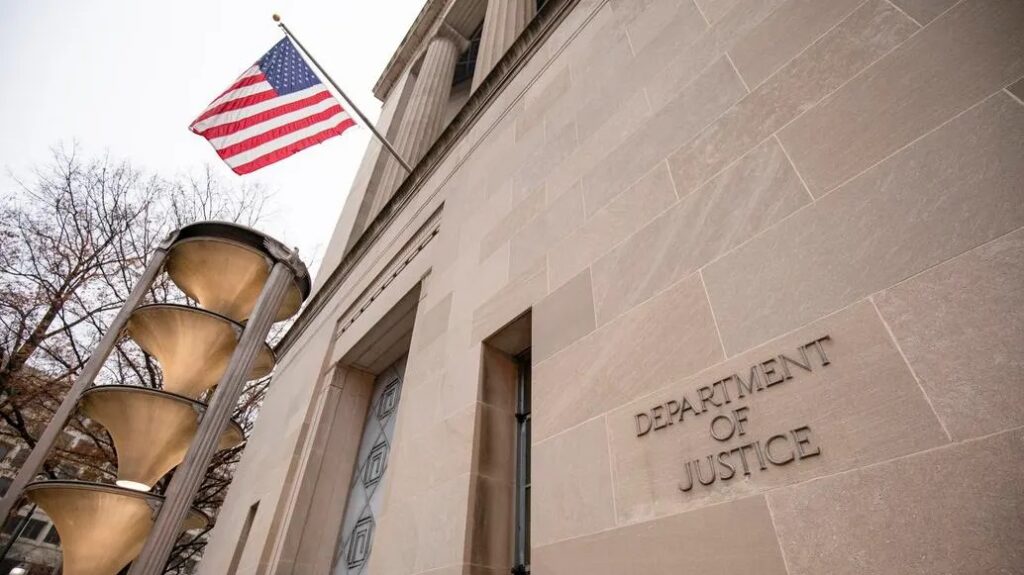The Federal Communications Commission (FCC) recently took a closer look at the use of enhanced Electronic Newsroom Technique (ENT) procedures in providing live captions for local news programs. The meeting underscored the need for quality captions on television, and we’ve outlined the highlights below.
What is ENT?
 Electronic Newsroom Technique captions are created from a newscast’s prewritten scripts. It requires reporters and anchors to stay on script as only the scripted material will be displayed as captions. As a result, deaf and hard-of-hearing (DHOH) viewers in areas outside of the top 25 Designated Market Areas − or DMAs, a list of the country’s viewing markets ranked by population − often do not have access to the spontaneous or unscripted comments of their in-studio news anchors, live reports delivered from another location, or breaking news stories.
Electronic Newsroom Technique captions are created from a newscast’s prewritten scripts. It requires reporters and anchors to stay on script as only the scripted material will be displayed as captions. As a result, deaf and hard-of-hearing (DHOH) viewers in areas outside of the top 25 Designated Market Areas − or DMAs, a list of the country’s viewing markets ranked by population − often do not have access to the spontaneous or unscripted comments of their in-studio news anchors, live reports delivered from another location, or breaking news stories.
Why do some stations use it?
Over the past decades, the FCC has established rules governing captions and captioning requirements on television, ensuring that DHOH viewers have access to programming, addressing captioning quality, and providing guidance to video distributors and programmers. Among the FCC’s requirements, captions must be accurate, complete, synchronous, and properly placed.
The FCC requires stations in large markets to provide realtime captions, usually created by human captioners and at a cost. However, live local news programs outside the top 25 DMAs are permitted to use Electronic Newsroom Technique (usually provided at a cost saving) to caption their programs.
How is the quality of ENT-generated captions?
Consumer groups have argued that the use of ENT for captioning prevents DHOH viewers from fully accessing news broadcasts, especially in instances of non-scripted news, with viewers missing out on live interviews, breaking news reports, and weather updates. In response, the FCC strengthened its requirements around ENT captioning in 2014, and added additional requirements for programmers outside the top 25 DMAs.
The FCC’s ENT Best Practices dictate that:
● In-studio produced programming (news, sports, weather, and entertainment) should be scripted.
● Pre-produced programming should be scripted to the best extent possible.
● If live interviews, live on-the-scene and/or breaking news segments are not scripted, stations should supplement them with screen crawls, textual information, or other means.
● Stations should train all news staff on scripting for improved ENT.
● Stations should appoint an ENT coordinator to oversee compliance.
How does ENT work in emergencies?
FCC rules require that all emergency broadcasts – no exceptions – be made accessible to deaf and hard-of-hearing viewers. So smaller stations (such as those outside the DMA top 25) that are exempt from some captioning rules, nonetheless, need to make their broadcasts accessible during emergencies.
To that end, stations that use ENT captions must provide captions for emergency news or make the emergency information accessible by some other form of visual presentation, such as crawls or scrolls that appear on the screen.
The FCC does recognize that it’s difficult to plan in advance the need for emergency captions, and has outlined some suggestions for stations to quickly obtain captioning resources, including:
● Entering into an agreement with a captioning provider (like VITAC) that is capable of generating captions on very short notice to ensure services in the event of an emergency;
● Reminding staff responsible for emergency programming to immediately contact the captioning services company at the onset of an emergency; and
● Training employees regarding the station’s visual presentation policies, and distributing the policy to all employees on a regular basis.
What was decided?
It’s hard to be accurate, but stations have ramped up efforts
The forum noted the need for further improvements to ENT best practices, including more accurate news and weather scripting, a better understanding of local obligations toward emergency information, and additional training across all stations. The forum panelists also noted that while live realtime captioning comes with a cost, the end-product is high-quality and, generally, worth it.
Autocaptions aren’t the solution.
Though some stations employ automatic captioning and voice recognition software for portions of their newscasts, the forum’s consensus was that technology still has a ways to go before it can compare with live, human-generated captions.
And the need for accurate news and information is, perhaps, even more critical when considering that many of the stations outside of the top 25 DMAs (such as those in Nebraska, Oklahoma, or Kansas) include those often subject to severe weather, such as tornados, floods, and blizzards, where emergency information in live broadcasts is critical to the public health, welfare, and safety.
Realtime is best.
Numerous companies, organizations, and groups, such as VITAC and the National Association of the Deaf, advocate for television stations to become leaders in their communities by providing realtime captioning for all their live and local news programs and talk shows and, further, that all pre-recorded television programming, including commercials, be captioned regardless of content.
Making all television content accessible is not only the right thing to do, but also helps broadcast messages and services – including those in times of emergency – to a larger audience.




